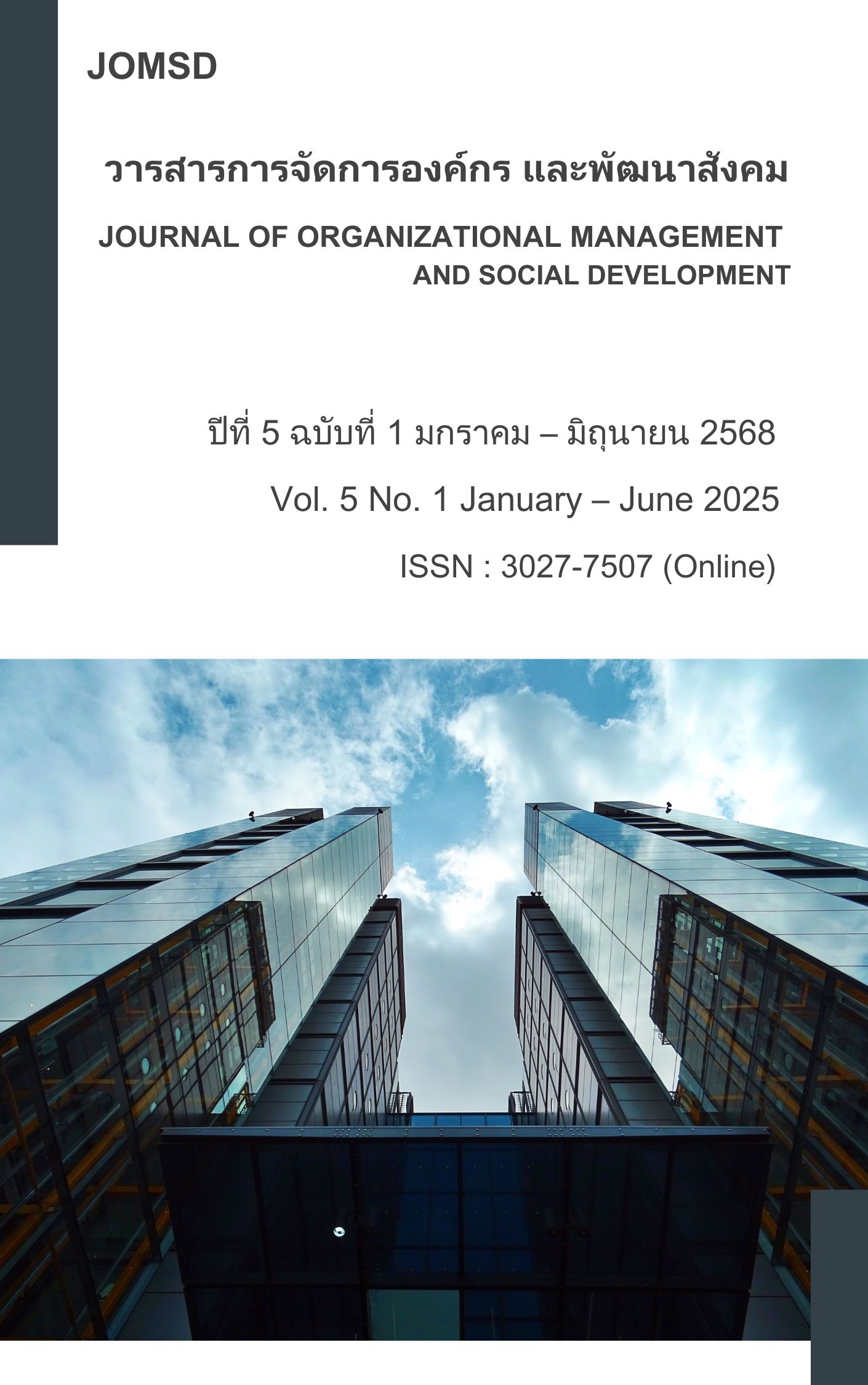Developing Marketing Innovation for Dali Wang Herbal Balm in The Area Betong District, Yala Province
Main Article Content
Abstract
This research article aims to 1) study the current situation and marketing problems of Da Li Wang herbal balm in Betong District, Yala Province and 2) develop marketing innovations Da Li Wang herbal balm in Betong District, Yala Province. Using a mixed-methods research methodology. target sample group of 400, consisting of 18 key informants. Quantitative research was conducted to collect data and qualitative research was conducted by conducting in-depth interviews using semi-structured interviews with key informants. then a focus group discussion was conducted to confirm the marketing innovation of Da Li Wang herbal balm in Betong District, Yala Province. The research results found that: 1) current situation, marketing problems Da Li Wang herbal balm in Betong District, Yala Province. most are female, aged 30-39 years. has a bachelor's degree, average monthly income of 15,001 - 20,000 baht, general laborer, and has used herbal balm products. Marketing mix data analysis results the Product, Price, Place and Promotion is at a high level. In terms of the 4Ps marketing mix, the product must have a beautiful shape, size, smell, and variety. The price should be 150-250 baht. The distribution channels include Facebook and Shopee. And in terms of marketing promotion, advertising, and free gifts. In marketing 5.0, it requires Data-Driven Marketing, Agile Marketing, Predictive Marketing, Augmented Marketing and Contextual Marketing and 2) develop marketing innovations Da Li Wang herbal balm in Betong District, Yala Province The 4Ps of Marketing Mix and Marketing 5.0 are related. Marketing must change its methods to be consistent and appropriate with the changing technologies of the era. It was found that all elements of Marketing 5.0 are related in a way that helps to enhance the potential of the Marketing Mix Theory.
Article Details
References
ไทยคู่ฟ้า. (2565). Thailand 4.0 ขับเคลื่อนอนาคตสู่ความมั่นคง มั่งคั่ง ยั่งยืน. สืบค้นจาก https://spm.thaigov.go.th/FILEROOM/spm-thaigov/DRAWER004/GENERAL/DATA0000/00000368.PDF.
ธนภณ นิธิเชาวกุล และเชาว์ โรจนแสง. (2556). โมเดลเชิงสาเหตุของปัจจัยที่มีอิทธิพลต่อภาพลักษณ์ตราสินค้าผลิตภัณฑ์เวชสำอางสมุนไพรไทย ในเขตกรุงเทพมหานครและปริมณฑล. วารสารวิชาการมนุษยศาสตร์และสังคมศาสตร์, 21(37), 211-238.
เบญจวรรณ บวรกุล, ภาวรรณรัตน์ วัฒนานิมิตกูล, พระมหาประกาศิต ฐิติปสิทธิกร และพระปลัดประพจน์ อยู่สําราญ. (2566). การพัฒนาตลาดท่องเที่ยวเกษตรอินทรีย์เชิงรุกเพื่อส่งเสริมการท่องเที่ยวเกษตรจังหวัดนครปฐม. สยามวิชาการ, 24(1), 35-56.
ศลิษา พิบูลย์สวัสดิ์. (2567). การตลาด 5.0 กับธุรกิจเครื่องสำอางเพื่อการส่งออก. วารสารสหวิทยาการนวัตกรรมปริทรรศน์, 7(1), 368-382.
ศูนย์วิจัยกสิกรไทย. (2561). แนวโน้มแนวโน้มภาคการท่องเที่ยว และแนวโน้มธุรกิจที่เกี่ยวเนื่องปี 2561. สืบค้นจาก https://www.kasikornresearch.com/th/analysis/k-econ/business/Pages/36759.aspx.
สำนักงานสภาพัฒนาการเศรษฐกิจและสังคมแห่งชาติ. (2561). รายงานประจำปี 2561 สำนักงานสภาพัฒนาการเศรษฐกิจและสังคมแห่งชาติ. 1-10. สืบค้นจาก https://www.nesdc.go.th/download/article/article_20190304120527.pdf.
สุตาภัทร คงเกิด. (2563). การศึกษาการพัฒนากลยุทธ์การตลาดเชิงเนื้อหาออนไลน์ ของกลุ่มธุรกิจหัตถกรรมผ้าทอ จังหวัดเชียงใหม่. วารสารสังคมศาสตร์และมานุษยวิทยาเชิงพุทธ, 5(2), 67-88.
Best W. John. (1997). Research in Education. (7th ed.). Boston: Allyn and Bacon.
Boonsawang, A. (2016). Brand and Packaging Design for Promoting Food Product Identity in Southern Border Province. MUT Journal of Business Administration, 13(2), 33-60.
Marketeer. (2017). การจับจ่ายใช้สอยของนักท่องเที่ยวที่เข้ามาในประเทศ “สมุนไพรไทย”. สืบค้นจาก https://marketeeronline.co/archives/151716.
Suvannin, W. (2016). Introduction to international business (cross-border trade). Bangkok, Thailand: Ramkhamhaeng University.
Wandee, N. (2016). Business Knowledge Processing Herbal Inhaler: Edible Knowledge Box Project. Office of Knowledge Management and Development (Public Organization). Retrieved from http://www.okmd.or.th.

